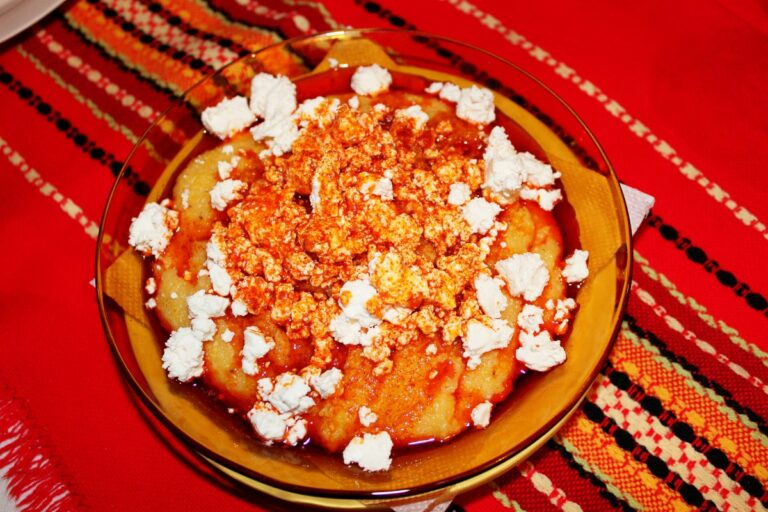Introduction: Bulgarian cuisine at a glance
Bulgarian cuisine is a reflection of the country’s rich history and diverse cultural influences. Located at the crossroads of Europe and Asia, Bulgaria’s traditional dishes are a blend of Ottoman, Mediterranean, and Slavic gastronomic traditions. Bulgarian cuisine is characterized by its hearty and flavorful dishes that rely on a wide array of fresh and locally sourced ingredients. From meaty stews to tangy salads, Bulgarian cuisine has something to offer to every foodie.
Touring Bulgaria’s culinary traditions
Bulgarian cuisine is a melting pot of different culinary traditions that have evolved over centuries. Some of the most popular dishes include kebapche, a grilled sausage made with minced pork and beef, and kyufte, a grilled meatball made with minced beef and onion. Another must-try dish is the tarator, a traditional cold soup made with yogurt, cucumbers, garlic, and dill. Other popular dishes include shkembe chorba, a tripe soup, and musaka, a layered casserole dish made with potatoes, minced meat, and eggs.
Bulgarian staples: meat, dairy and veggies
Meat is an essential part of Bulgarian cuisine, and pork, beef, and chicken are the most commonly used meats. Bulgarian cuisine also features a wide range of dairy products, such as cheese, yogurt, and sour cream. Bulgarian yogurt, in particular, is famous for its creamy texture and tangy taste. Vegetables are also an essential part of Bulgarian cuisine, and fresh salads made with tomatoes, cucumbers, onions, and peppers are a staple at every meal.
The famous Bulgarian yogurt
Bulgarian yogurt is a fermented dairy product that is made by adding specific strains of bacteria to milk. The resulting yogurt has a creamy texture and tangy taste and is known for its many health benefits. Bulgarian yogurt is high in protein, calcium, and probiotics, making it a popular choice for those looking to improve their digestive health. Bulgarian yogurt is also commonly used in cooking, and it is often added to soups, stews, and dips.
Banitsa: the iconic pastry dish
Banitsa is a traditional pastry dish that is typically eaten for breakfast or as a snack. It is made with phyllo dough and filled with a mixture of eggs, cheese, and yogurt. Banitsa can also be filled with other ingredients, such as spinach, mushrooms, or meat. It is usually served with a dollop of yogurt or sour cream on top, and it is a favorite among Bulgarians and visitors alike.
Bulgarian wines: an emerging industry
Bulgaria has a long history of winemaking, and it is an emerging industry that is gaining more attention in recent years. Bulgarian wines are known for their rich flavor and aroma, thanks to the country’s unique Terroir. Some of the most popular grape varieties used in Bulgarian winemaking are Merlot, Cabernet Sauvignon, and Mavrud. Bulgarian wines are also known for their excellent value, and many wine enthusiasts are discovering the country’s hidden gems.
Bulgarian desserts: from baklava to honey
Bulgarian cuisine has a sweet tooth, and there are many traditional desserts that are worth trying. Baklava is a popular sweet pastry made with layers of phyllo dough, nuts, and honey syrup. Another favorite is the kadaif, a sweet pastry made with shredded phyllo dough and filled with nuts and syrup. Bulgarian honey is also famous for its quality and taste, and it is used in many desserts and sweet dishes.
Exploring the diversity of Bulgarian cuisine
Bulgarian cuisine is a rich and complex culinary tradition that reflects the country’s diverse cultural heritage. From hearty meat dishes to fresh salads, Bulgarian cuisine has something to offer to every palate. Whether you’re a meat lover or a vegetarian, there are plenty of options to explore. So, if you’re looking for a new and exciting culinary adventure, be sure to give Bulgarian cuisine a try!

